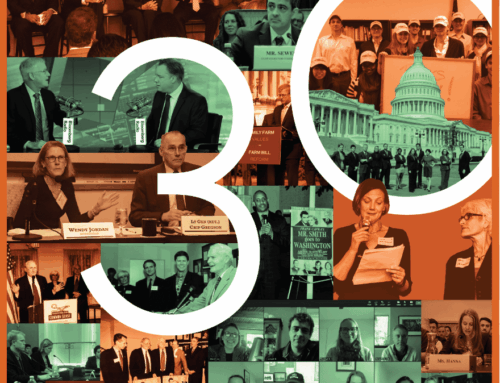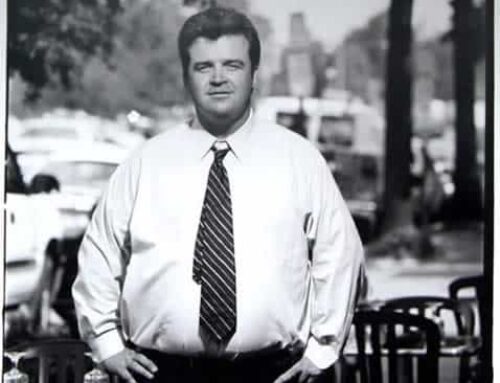The new fiscal year for the federal government starts Monday with every department fully open and running through at least early December, after Congress made its best progress in years in passing the government’s annual spending bills on time.
Lawmakers hailed the move back toward “regular order” after years of shutdown showdowns and short-term funding bills — while acknowledging that even under the best circumstances in years for passing appropriations bills, they still ended up kicking a good deal of their work past the midterm elections.
President Trump on Friday signed into law a two-bill, $854 billion package that provides full-year funding for the departments of Defense, Labor, Health and Education.
That joins an earlier $147 billion package that funded energy, water, veterans affairs, military construction and legislative branch programs through Sept. 30, 2019.
Combined, they fund close to 80 percent of the federal discretionary budget. This year is the first time in two decades that so many annual spending bills have been passed on time.
And Mr. Trump’s signature also averted a shutdown for other areas of government, such as Homeland Security and the State and Justice departments, for which Congress didn’t finish final bills in time for Monday, the start of the new fiscal year.
Instead, those will continue at least through early December on the same rate of funding as they did in the last fiscal year.
Senate Appropriations Committee Chairman Richard Shelby said Mr. Trump’s signatures mark a “drastic turnaround” in the way Congress has funded the government in recent years.
“Our progress benefits the entire country, and I hope we can continue down this path for the good of the American people,” Mr. Shelby said.
The key was an agreement struck early on by Mr. Shelby and Senate Appropriations Committee Vice Chairman Patrick J. Leahy, a Democrat, to forgo controversial policy “riders” on hot-button issues like abortion and gun control in this year’s bills.
Democrats agreed not to filibuster as long as the riders were dropped.
Conservatives were displeased, arguing the GOP should have flexed its majority and won some of those policy fights through the spending bills.
But the goal of getting bills done on time, and avoiding a shutdown, was more important to the majority of Republicans.
“It’s significant progress that we’ve made — perhaps the most in the last decade,” said Rep. John Moolenaar, a Michigan Republican who sits on the labor-health-education spending subcommittee. “I think this is really a good finish to the appropriations process at this time, but we still have more work in December to fully complete it.”
Lawmakers had greased the skids for the bills when they struck a deal in February to add about $150 billion in new spending room in fiscal 2019, giving both parties an opportunity to engage in one of the few remaining areas of bipartisanship in Washington: spending money.
Democrats pumped the brakes on congratulatory talk.
Rep. Marcy Kaptur, the top Democrat on the energy and water spending subcommittee, said the full Congress deserves a “C” or a “C minus” for its performance on passing this year’s spending bills.
“We weren’t able to pull all the bills forward,” she said — though she said the lawmakers who wrote the bills that did pass deserve higher marks.
Rep. John Yarmuth questioned whether this year’s harmony will last into the future once lawmakers face spending caps still in place for 2020 and 2021, and which would require tens of billions of dollars in cuts if Congress doesn’t strike another budget deal.
“We’re going to be faced with some much more difficult choices going forward,” said Mr. Yarmuth, the top Democrat on the House Budget Committee.
Steve Ellis, vice president of Taxpayers for Common Sense, did give Congress credit for getting more spending bills done on time — but said that the extra money for both defense and non-defense programs helped keep the process moving.
“By having all this extra cash, they could say yes to everyone, and so it was the Oprah equivalent of appropriations — ‘You get a car, you get a car and you get a car, too,’” he said.
His group found, for example, that the final Pentagon spending bill somehow settled on $7.5 billion in additional money for procurement programs, which was higher than both the $5.6 billion in the House version and the $6.2 billion in the Senate version.
“I think they had to work to find ways to spend the cash,” Mr. Ellis said.
Congressional leaders also had to navigate Mr. Trump’s intermittent threats to “shut down” the government if he didn’t get enough funding for his desired U.S.-Mexico border wall.
The bill Mr. Trump signed Friday extends homeland security spending at current-year levels until at least Dec. 7. That means for the moment, he’s in line to get $1.6 billion for the wall in 2019 — less than the $5 billion he has pushed for.
Stan Collender, a longtime analyst of the federal budget process, likened GOP leaders’ efforts to get Mr. Trump to push off a shutdown showdown over the wall to Lucy invariably pulling the football away from Charlie Brown at the last second in the “Peanuts” comic.
“He’s probably kissed the wall goodbye,” Mr. Collender said. “This is now the third or fourth time that Congress hasn’t given him what he wanted on the wall. It’s less likely to do it after the election — especially if there’s a Democratic wave in the House.”










